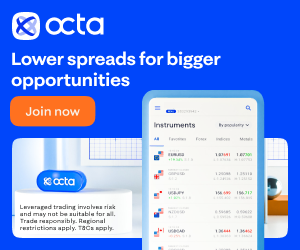FortFS Journal (Broker out of business)
| Journal status: closed FortFS out of business |
FortFS Profile
Website
www.fortfs.com
Year
2010
Country
SVG
Branches
3
Regulation
not regulated
Registration
FSA SVG
Investor protection
Fund protection
no
Publicly traded
no
Restricted in
Not serving
х US
Broker type
MM, STP
Dealing book
A+B hybrid book
Tier
3
Execution speed
...
LPs total
...
LPs quality
Tier-1 Banks, ECNs, other
LPs names
CME Group, Hotspot
FortFS Accounts
MM
STP
Minimum Deposit
5 $
500 $
Leverage
1000 : 1
1000 : 1
Minimum Lot
0.01 lots
0.1 lots
EURUSD spread
2 pips
0.1 pips
Commission
0 $/lotRT
9 $/lotRT
Volume
1000 lots
100 lots
Margin Call
50 %
80 %
Stop Out
25 %
40 %
Execution
Instant
Market
Spread
fixed
floating
Scalping
yes
yes
Deposit & Fees
Deposit methods
Bank Wire, Credit Card, Debit Card, FasaPay, Neteller, QIWI, Skrill, Perfect Money, WebMoney, Local Transfer Malaysia, Local Transfer Vietnam, Local Transfer Thailand
Base currency
USD, EUR
Segregated accounts
yes
Interest on margin
no
Inactivity fee
none
| Update broker |
- Full listing profile: FortFS broker profile
Is FortFS safe?
- Investor protection: no
- Regulation: not regulated
- Registration: FSA SVG
- Publicly traded: no
- Segregated account: yes
- Guaranteed Stop Loss: no
- Negative Balance Protection: no
Is FortFS trusted?
- Information transparency: sufficient
★★★ - Customer service: not so helpful
★★ - FortFS website: highly detailed, updated
★★★★★ - FortFS popularity (by visitor count): average
★★★
How FortFS works
2.Quotation flow
2.1.The Company proceeds the quota on flow for each trading instrument basing upon the market trading conditions and instant quotes received from the liquidity providers and on a periodic basis provide the Client with such quotes as the Market snapshot.
2.2. All quotes received by the Client via the trading terminal are indicative and represent the best price levels (Best Bid/Ask) formed by the Company from the quotes flow received from the liquidity providers for the particular account type. The Company does not broadcast the full Order Book into the Client’s trading platform. Therefore, the actual execution of orders may use the prices higher/lower than Bid/Ask displayed in the terminal.
3.4.Order Execution types.
3.4.1. Instant Execution – using this regime means the orders are executed at the prices offered by the Company to the Client.
3.4.2. Request Execution – using this regime means the orders are executed at the prices previously received by the Company.
3.4.3. Market Execution – using this regime means the orders are executed at the market prices in accordance to the Company’s decision only without the consent of the Client
3.4.4. Exchange Execution – using this regime means the orders placed in the trading terminal are executed according to the external trading system conditions (e.g. Exchange conditions).
3.18. The Company analyzes trading activities on the accounts and in case of obvious discrepancies between the prices used in the orders and the prices received from the counterparty, reserves the right to adjust or completely cancel any trade transaction in accordance with the results of recalculation at the prices of the counterparty.
3.20. At order execution moment the distance between the order activation price and Stop Loss/Take Profit prices or between the pending order activation price and the current market price could not be greater than the minimal limit and stop levels specified in the trading specifications.
At its discretion the Company might compensate the negative balance to 0 (zero) balance, however, this compensation might be deducted from the next deposit.
5.8. If the total Company’s costs for the positions of the Client covered at liquidity provider side are not compensated by the sufficient trading volume of that account, the Company is entitled to apply the costs sum in amount enough to cover these costs.
https://static.fortfs.com/download/docs/en/10_rules_of_proceedings_for_trading_operations.pdf
Add new comment...










